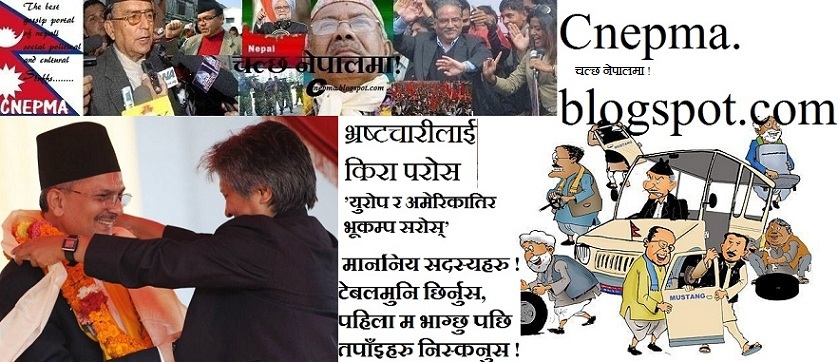
Kathmandu could be on the brink of a major earthquake, and the UK and others are working to help Nepal avert disaster
There is no denying it, natural disasters are on the increase. The past 18 months has seen devastating earthquakes in Haiti, New Zealand and Japan, floods in Pakistan, and numerous less reported events. Last year, 110 million more people were affected by disasters than in 2004 – the year of the Boxing Day tsunami.
We need to be prepared for these future shocks. It is difficult to know precisely where the next disaster will strike, but there are countries and cities that must be on a higher state of alert. One of these is Nepal, and in particular its capital, Kathmandu.
My first overseas visit as minister for international development was to Nepal, the poorest country in Asia. There is good reason to believe the country is on the brink of a major disaster – one with potentially cataclysmic results.
First, the country is a highly seismic region, lying between the collision of Indian and Eurasian plates. It has a major earthquake roughly every 70 years – it's been nearly 80 years since the last one. Second, its lack of development and its deep-rooted poverty leave it underprepared and extremely vulnerable.
Kathmandu has experienced massive, poorly controlled urbanisation in the last few years and now has a population of around 5 million. Its building standards are nonexistent, so millions of people could be buried in a city-wide pile of rubble. Access routes would be blocked. The airport could be disabled. The international community would face a massive humanitarian crisis, and there would be no way to get help through.
A survey by the Kathmandu Valley Earthquake Risk Management Project(pdf) suggests around 40,000 would die, with 100,000 injured, plus tens of thousands left homeless. This could be a conservative estimate. Confronted with the growing base of evidence, we should be asking ourselves what we can do to reduce this risk.
Disaster preparedness in Kathmandu is poor. The Nepalese government's capacity and investment in disaster management remains low, hamstrung by bureaucracy and political stasis. There is a serious lack of investment in critical infrastructure like schools and hospitals. Nepal's disaster strategy sits in the constituent assembly awaiting approval, along with a logjam of hundreds of other acts and bills.
What Nepal needs is a detailed, co-ordinated action plan that is ready to work now. Heavy equipment must be prepositioned at the airport to repair any damage to the runway. Command and control mechanisms must be put in place so that good communications can remain intact to direct the urgent rescue work that would be needed. And each international partner must know exactly what action to take when disaster strikes.
Action is being taken. The UN recently set up a Nepal Risk Reduction Consortium, which presents a major opportunity to spur the government and the international community into action. The UK is a member of the consortium, and we will be putting substantial technical and financial resources – £20m ($30m) over the next four years – behind this initiative. But this will not be enough by itself.
Shortly after taking office, the coalition government asked Lord Ashdown to carry out a review of the UK's humanitarian and emergency responsepractices to look at how we can ensure we remain world leaders in this area. The report, published last month, contains many recommendations that will inform our thinking on the future of UK disaster response work.
Ashdown's Humanitarian Emergency Response Review offers a number of suggestions for what we could be doing now to prepare more effectively for a major disaster in Nepal, through the consortium.
First, anticipation and a stronger focus on preparing for disasters. Nepal's government, with support from the international community, needs to focus on the earthquake threat and plan for it. We must bring Nepal's powerful neighbours, India and China, in to play an active role in response planning.
It is basic good sense that countries such as Nepal, with a high vulnerability to disasters, learn how to improve their ability to deal with crises. This is about building houses, schools and hospitals that can withstand earthquakes, floods and landslides. But it's also about investing in the government's ability to respond; creating disaster management plans; and educating people about disaster risks. The consortium will only work with leadership from Kathmandu.
There is growing evidence that building community resilience to shocks is more cost effective than humanitarian response. Evidence shows that for every $1 spent on prevention, $4 less needs to be spent on the response. We will push other donors to invest in Nepal's earthquake risk reduction.
Finally, Ashdown's review makes clear that we must work with existing partners but also develop partnerships with charities, NGOs, the private sector and faith groups.
But this is not just an issue for Britain. Recent disasters have seen dozens of countries step in to help others in their hour of need. We need to act with the same unity in preparing for these shocks in advance to make sure we do all we can to avert and minimise the damage a natural disaster can cause.
I am currently in Washington at a forum on disaster risk reduction in Asia, and there is real consensus on the need to learn from recent disasters. The real challenge will lie in maintaining the momentum once the spotlight has moved off of the issue. But I am absolutely clear that this is a risk we cannot ignore and so we must not let it fall into the shadows.
(An article published in Guardian by Alan Duncan. Alan Duncan is a minister of state in the Department for International Development)



